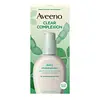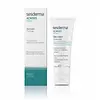What's inside
What's inside
 Key Ingredients
Key Ingredients

 Benefits
Benefits

 Concerns
Concerns

 Ingredients Side-by-side
Ingredients Side-by-side

Salicylic Acid 0.5%
MaskingWater
Skin ConditioningC12-15 Alkyl Benzoate
AntimicrobialCetearyl Alcohol
EmollientDimethicone
EmollientMethyl Gluceth-20
HumectantPPG-10 Cetyl Ether
Skin ConditioningBis-Phenylpropyl Dimethicone
Arachidyl Alcohol
EmollientBehenyl Alcohol
EmollientGlycine Soja Seed Extract
Skin ConditioningGlycerin
HumectantIsoceteth-20
EmulsifyingPolyacrylamide
Cetearyl Glucoside
EmulsifyingArachidyl Glucoside
EmulsifyingC13-14 Isoparaffin
EmollientEthylene/Acrylic Acid Copolymer
Emulsion StabilisingParfum
MaskingLaureth-7
EmulsifyingDisodium EDTA
BHT
AntioxidantSodium Hydroxide
BufferingCitric Acid
BufferingSalicylic Acid 0.5%, Water, C12-15 Alkyl Benzoate, Cetearyl Alcohol, Dimethicone, Methyl Gluceth-20, PPG-10 Cetyl Ether, Bis-Phenylpropyl Dimethicone, Arachidyl Alcohol, Behenyl Alcohol, Glycine Soja Seed Extract, Glycerin, Isoceteth-20, Polyacrylamide, Cetearyl Glucoside, Arachidyl Glucoside, C13-14 Isoparaffin, Ethylene/Acrylic Acid Copolymer, Parfum, Laureth-7, Disodium EDTA, BHT, Sodium Hydroxide, Citric Acid
Water
Skin ConditioningPPG-15 Stearyl Ether
EmollientNiacinamide
SmoothingPentylene Glycol
Skin ConditioningArachidyl Alcohol
EmollientBehenyl Alcohol
EmollientAcrylamide/Sodium Acryloyldimethyltaurate Copolymer
Emulsion StabilisingSalicylic Acid
MaskingArachidyl Glucoside
EmulsifyingPhytosphingosine Hcl
Skin ConditioningC13-14 Isoparaffin
EmollientTriclosan
PreservativeLactose
HumectantLaureth-7
EmulsifyingLactis Proteinum
Skin ConditioningPhenoxyethanol
PreservativeEthylparaben
PreservativeMethylparaben
PreservativeParfum
MaskingLimonene
PerfumingGeraniol
PerfumingCoumarin
PerfumingLinalool
PerfumingIsoeugenol
PerfumingMethyl Isoeugenol
PerfumingEugenol
PerfumingWater, PPG-15 Stearyl Ether, Niacinamide, Pentylene Glycol, Arachidyl Alcohol, Behenyl Alcohol, Acrylamide/Sodium Acryloyldimethyltaurate Copolymer, Salicylic Acid, Arachidyl Glucoside, Phytosphingosine Hcl, C13-14 Isoparaffin, Triclosan, Lactose, Laureth-7, Lactis Proteinum, Phenoxyethanol, Ethylparaben, Methylparaben, Parfum, Limonene, Geraniol, Coumarin, Linalool, Isoeugenol, Methyl Isoeugenol, Eugenol
Ingredients Explained
These ingredients are found in both products.
Ingredients higher up in an ingredient list are typically present in a larger amount.
Arachidyl Alcohol is a fatty alcohol made from peanut oil. It is an emollient, emulsifier, and thickener.
You'll most likely find this ingredient as an emulsifier in water-based cosmetics.
We don't have a description for Arachidyl Glucoside yet.
Behenyl Alcohol is a type of fatty alcohol (these are different from the drying, solvent alcohols).
Fatty Alcohols have hydrating properties and are most often used as an emollient or to thicken a product. They are usually derived from natural fats and oils; behenyl alcohol is derived from the fats of vegetable oils.
Emollients help keep your skin soft and hydrated by creating a film that traps moisture in.
In 2000, Behenyl Alcohol was approved by the US as medicine to reduce the duration of cold sores.
Learn more about Behenyl AlcoholThis ingredient is also known as "C13-14 Isoalkane".
C13-14 Isoparaffin is created from petroleum-based mineral oils. It is an emollient and helps thicken a product.
As an emollient, it helps keep the skin soft and smooth by creating a barrier on top. This barrier traps moisture in, keeping the skin hydrated.
C13-14 Isoparaffin may not be fungal-acne safe.
Learn more about C13-14 IsoparaffinLaureth-7 is created by the ethoxylation of lauryl alcohol using ethylene oxide. Lauryl alcohol is a fatty alcohol with hydrating properties.
This ingredient is an emulsifier and cleansing ingredient. As an emulsifier, it is used to prevent ingredients from separating. It also helps cleanse the skin by gathering dirt, oil, and pollutants to be rinsed away.
Parfum is a catch-all term for an ingredient or more that is used to give a scent to products.
Also called "fragrance", this ingredient can be a blend of hundreds of chemicals or plant oils. This means every product with "fragrance" or "parfum" in the ingredients list is a different mixture.
For instance, Habanolide is a proprietary trade name for a specific aroma chemical. When used as a fragrance ingredient in cosmetics, most aroma chemicals fall under the broad labeling category of “FRAGRANCE” or “PARFUM” according to EU and US regulations.
The term 'parfum' or 'fragrance' is not regulated in many countries. In many cases, it is up to the brand to define this term.
For instance, many brands choose to label themselves as "fragrance-free" because they are not using synthetic fragrances. However, their products may still contain ingredients such as essential oils that are considered a fragrance by INCI standards.
One example is Calendula flower extract. Calendula is an essential oil that still imparts a scent or 'fragrance'.
Depending on the blend, the ingredients in the mixture can cause allergies and sensitivities on the skin. Some ingredients that are known EU allergens include linalool and citronellol.
Parfum can also be used to mask or cover an unpleasant scent.
The bottom line is: not all fragrances/parfum/ingredients are created equally. If you are worried about fragrances, we recommend taking a closer look at an ingredient. And of course, we always recommend speaking with a professional.
Learn more about ParfumSalicylic Acid (also known as beta hydroxy acid or BHA) is a well-known ingredient for treating skin that struggles with acne and clogged pores. It exfoliates both the skin's surface and deep within the pores to help clear out buildup, control oil, and reduce inflammation.
Unlike AHAs (alpha hydroxy acids), salicylic acid is oil-soluble. This allows it to penetrate into pores which makes it especially effective for treating blackheads and preventing future breakouts.
Salicylic acid is also known for its soothing properties. It has a similar structure to aspirin and can calm inflamed or irritated skin, making it a good option for acne-prone skin that is also sensitive.
Concentrations of 0.5-2% are recognized by the U.S. FDA as an over-the-counter topical acne product.
It can cause irritation and/or dryness if one's skin already has a compromised moisture barrier, so it's best to focus on repairing that before introducing this ingredient into your routine.
While salicylic acid does not increase sun sensitivity, it’s still important to wear sunscreen daily to protect your skin.
If you are looking for the ingredient called BHA or Butylated Hydroxyanisole, click here.
Learn more about Salicylic AcidWater. It's the most common cosmetic ingredient of all. You'll usually see it at the top of ingredient lists, meaning that it makes up the largest part of the product.
So why is it so popular? Water most often acts as a solvent - this means that it helps dissolve other ingredients into the formulation.
You'll also recognize water as that liquid we all need to stay alive. If you see this, drink a glass of water. Stay hydrated!
Learn more about Water